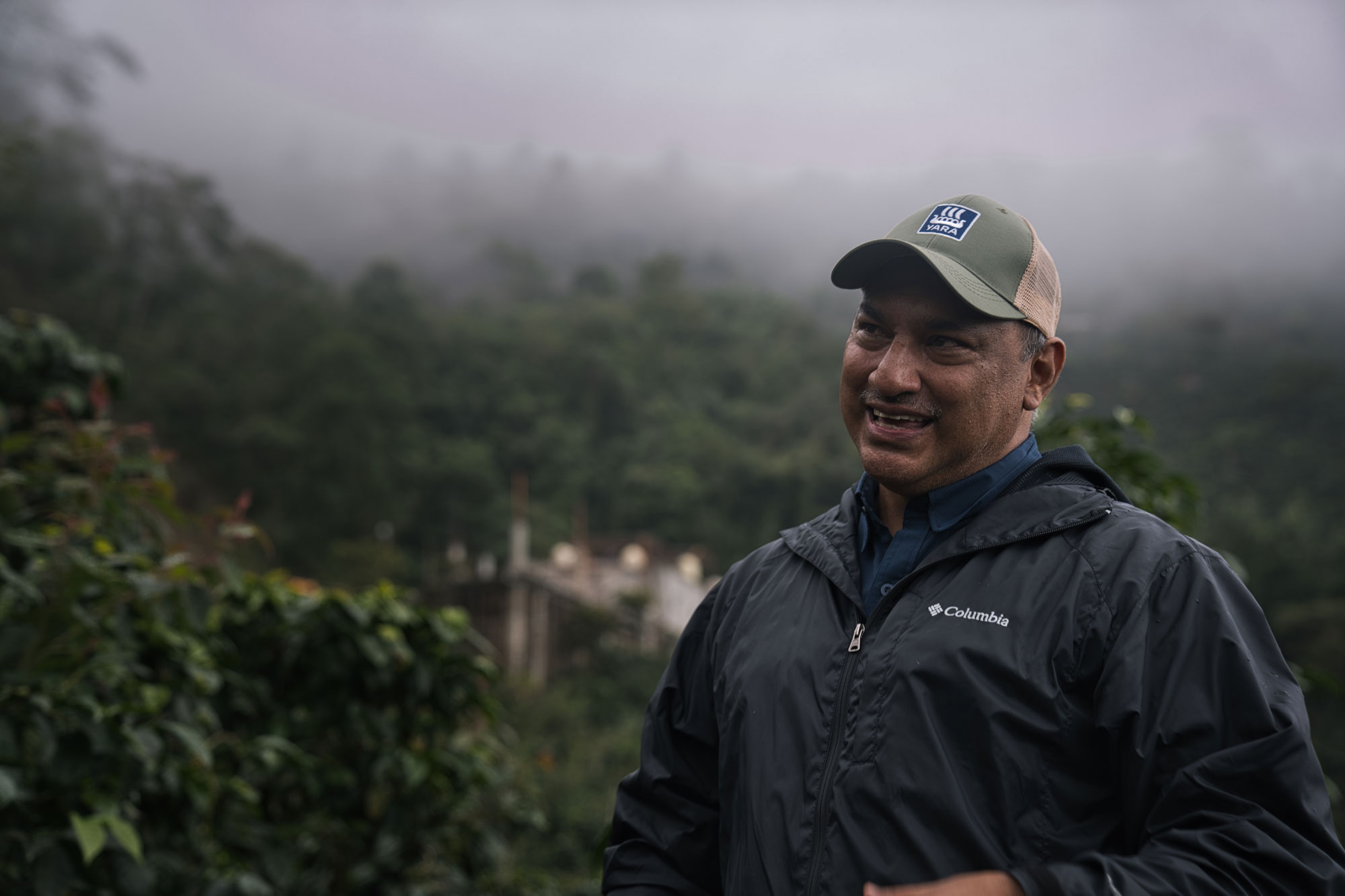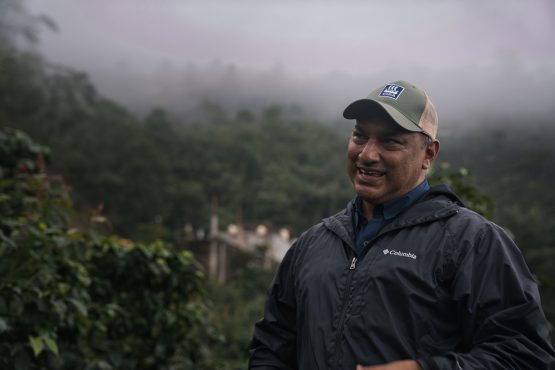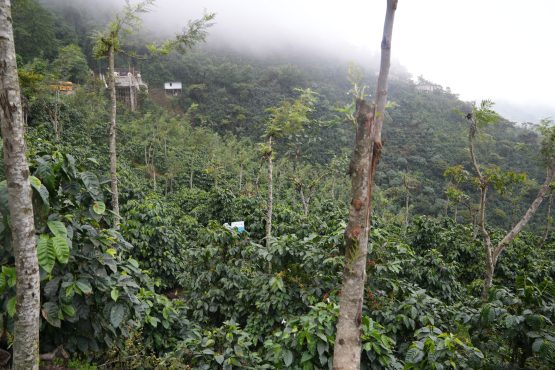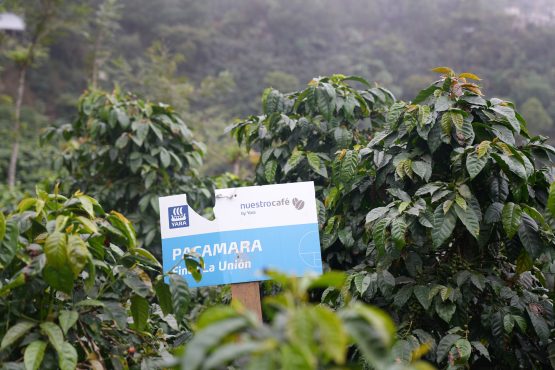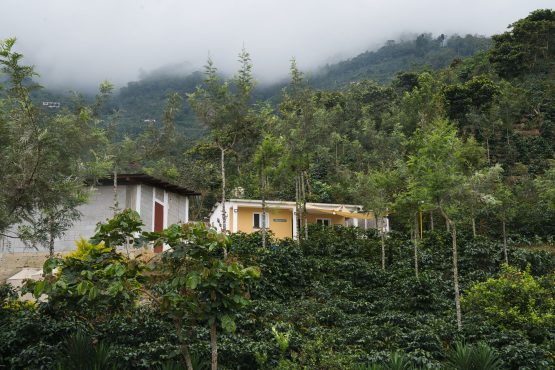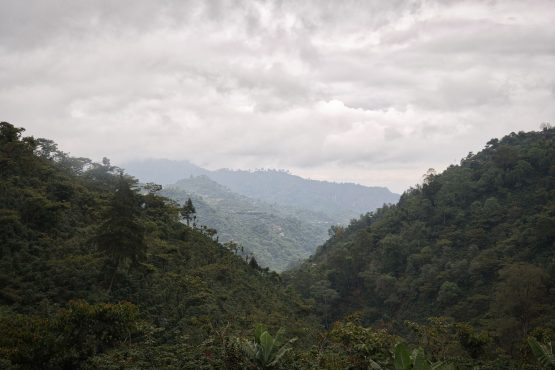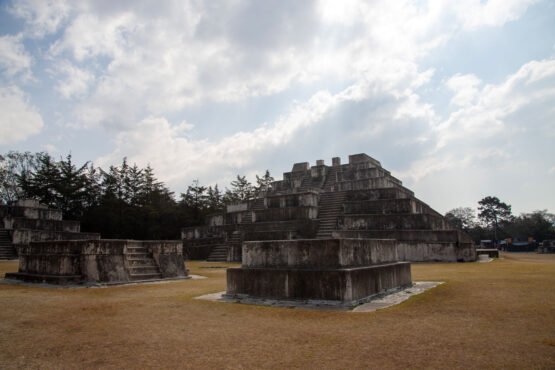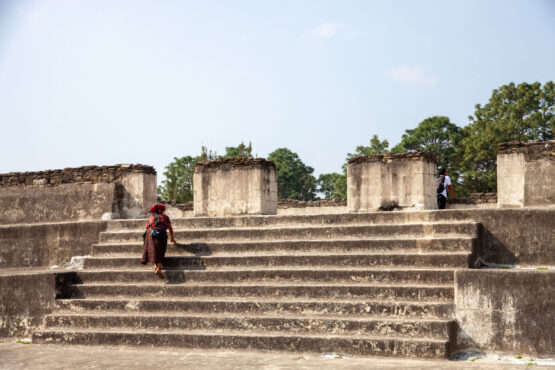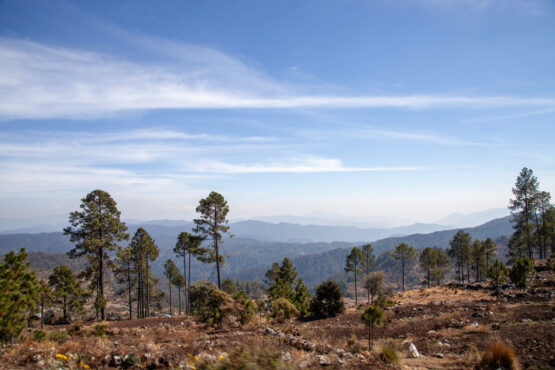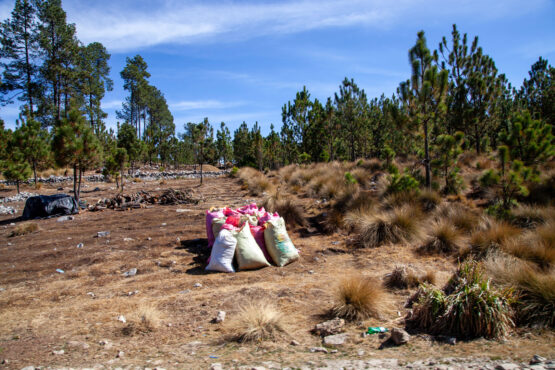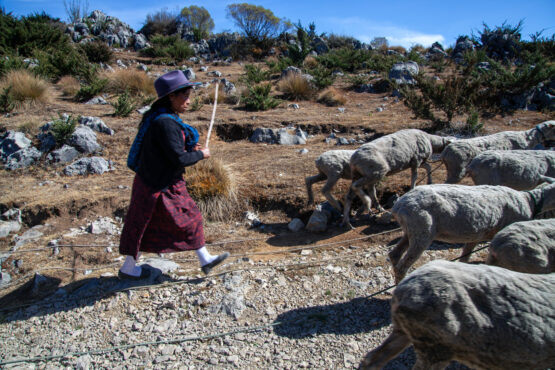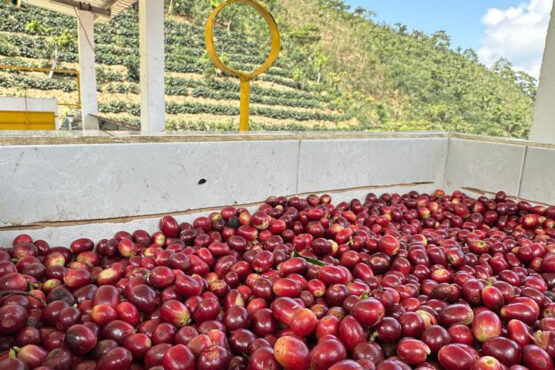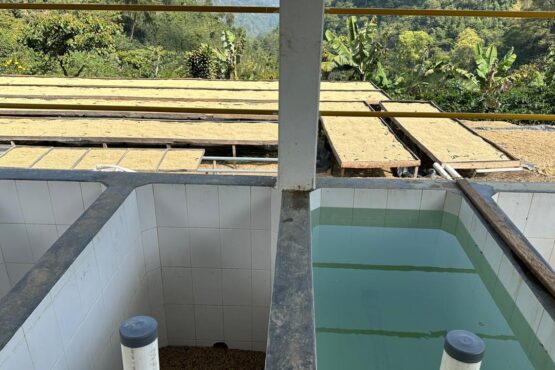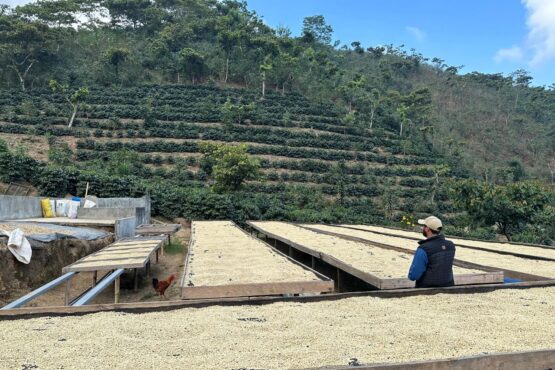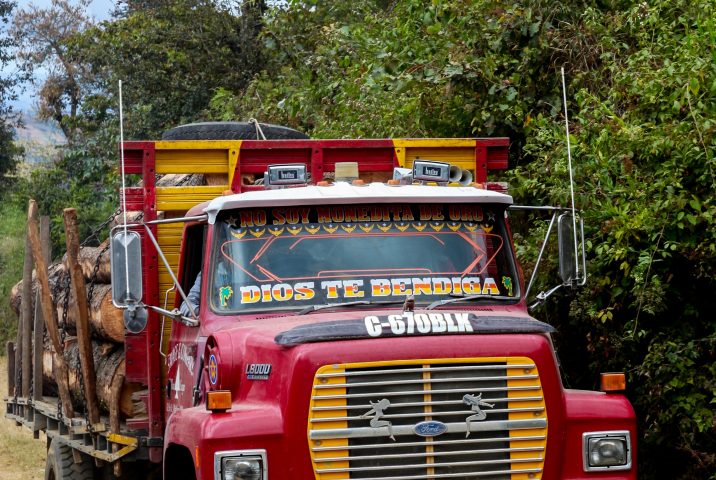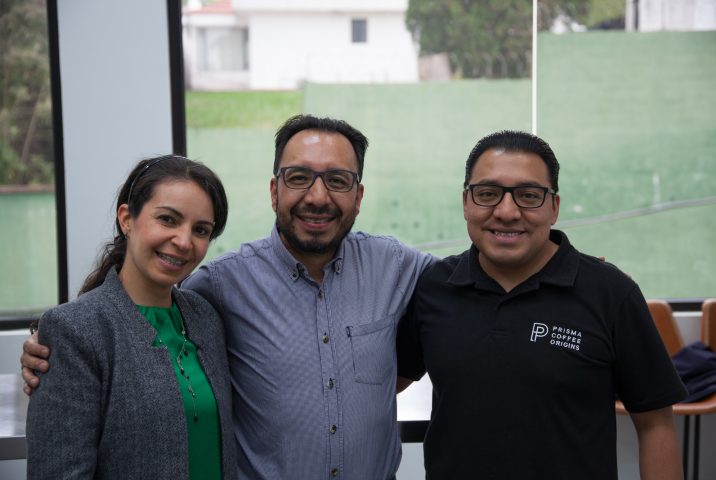La Unión Pacamara
Fruit-forward and complex, with juicy mouthfeel. Blueberry, lychee and yellow peach.
This Pacamara microlot was grown and processed at La Unión, a beautiful 21-hectare farm nestled in the hills of Guatemala’s Huehuetenango department. The farm is owned by third-generation producer Carlos Rivas, who purchased the property in 2017 after it had been left abandoned and in disrepair for over a decade.
La Unión (which translates to “unity”) sits near the town of Agua Dulce, in the west of Guatemala near the border with Mexico. To reach the estate, a two hour trek through steep and windy roads is required, eventually leading to the municipality of San Pedro Necta. The verdant hills surrounding the town centre are home to many independent farmers, who grow coffee as their primary source of income.
Owner Carlos began to scout for properties as far back as 2015, when he enlisted a team of engineers to study potential parcels in HueHue that would be best-suited to coffee. Receiving some 1,600mm of water per year, and experiencing an average temperature of 22 degrees, La Unión was identified as having ideal conditions, and was purchased two years later. Once the property had been secured, Carlos decided to plant 40% of the estate with unique varieties that had great potential for quality, while the remaining 60% grows high-yielding varieties to increase productivity. Today, the estate contains 22 different varieties in total, including Gesha, Pacamara, Catuaí, Villa Sarchí and Anacafe 14. La Unión also includes a plot dedicated to variety trials through a research partnership with World Coffee Research. This particular lot is 100% Pacamara.
The farm sits at an elevation of 1,650–1,850m above sea level, which is ideal for coffee-growing in HueHue. The crop is grown under the shade of Ingas and Grevillea trees which protect the coffee trees from the sun and provide valuable organic material, keeping the soil moist and well-nourished. After their first harvest in 2019, Carlos and his team have been working hard to further improve the quality of their crop. To that end, La Unión’s team includes a Q Processing qualified agronomist and a Q Grader, who both carefully evaluate quality and the processes followed at every step of production.
This exceptional lot was sourced with the help of export partner Eduardo Ambrocio and the team at Prisma Coffee Origins. Eduardo, who is also a Head Judge for Cup of Excellence, is one of the best cuppers we know — and through his work in Guatemala, we are connected to several quality-focused producers, who grow coffee at a small to medium scale. Head here to learn more about Eduardo’s work in Guatemala.
ABOUT HUEHUETENANGO
Huehuetenango (or HueHue as it is often called) is a stunning region located in the west of Guatemala near the border with Mexico. HueHue is known for being home to the Cuchumatanes mountain range, the highest non-volcanic mountain range in Central America, and for its vast ethnic diversity, which includes the Mam, Q’anjob’al, Chun and Jakalteko people. Before the Spanish invasion, the region was known as Xinabajul, which translates to “between ravines” in the local Mam language and is a reference to the numerous cliffs and steep hills found throughout the department. Pre-colonisation, the region’s largest city was Zaculeu (found in the outskirts of modern Huehue City), which translates to “white earth,” and whose ruins can still be visited today.
The department is vast, and includes a number of types of terrain that are suited to different forms of agriculture, depending on the elevation. Corn is the main staple of the lower regions, which transitions into coffee the further up one goes, with local pine farmed throughout the entire department. Huehue’s coffee-growing regions produce some of the most complex and celebrated lots in the country, and the region frequently appear in the top ten of the Cup of Excellence competition. This is in part due to the incredibly high elevations that coffee can grow (up to 2,000m above sea level), thanks to the dry, hot winds that blow into the mountains from Mexico’s Tehuantepec plain and protect the region from frost. These high elevations combined with a relatively predictable climate make for exceptional quality coffee. The highest elevations in Huehue, above 2,100m above sea level, are quite dry and rocky, so most farmers dedicate themselves to growing potatoes and herding sheep, goats and llamas.
HOW THIS COFFEE WAS PROCESSED
Harvest time at La Unión began in December and concluded at the end of April. Seasonal workers employed were trained in best-picking techniques and selected only the perfectly ripe cherries.
This coffee was processed using the washed method at the farm’s onsite wet mill. At the end of the day, each of the workers delivered their carefully selected coffees to the mill, where they were hand-sorted and left to pre-ferment for 24 hours. This was done using permeable nylon sacks, which kept coffee stable by matching its internal temperature with that of the surrounding environment. At this stage, the team was very careful to place the sacks filled with cherries in a cool, dry place to protect them from the elements, as high temperatures can accelerate fermentation and introduce undesirable flavours.
Cherries were then pulped and the resulting wet parchment was left to ferment in tank for around 36 hours. Coffee was then washed with fresh water, and left in tank overnight, for a second fermentation. The following day, beans were washed again as they went down the mill’s washing channels. At La Unión, rare variety lots like this one are dried on raised beds for 10-15 days.
Many Guatemalan farmers choose beds over cement patios to dry their coffee, as patios retain too much heat during the day and can affect the final cup. Raised drying beds have the benefit of allowing air to flow freely over and under the cherries, keeping them cool as they dry. To ensure the drying parchment was protected from HueHue’s intense sun, a mesh cover was placed over the beds from 11AM to 2PM. Once dry, the coffee was rested in parchment until it was ready for export.
